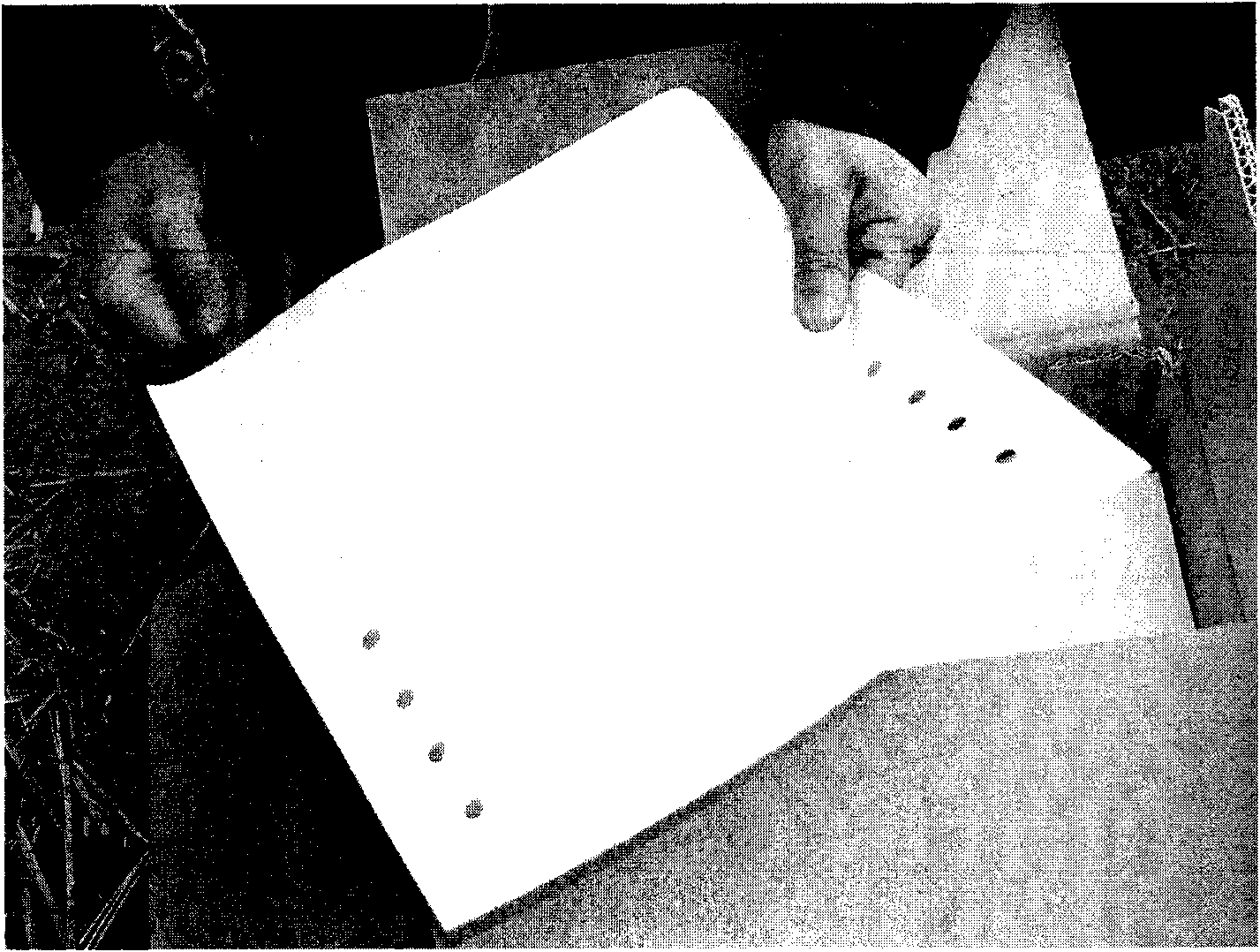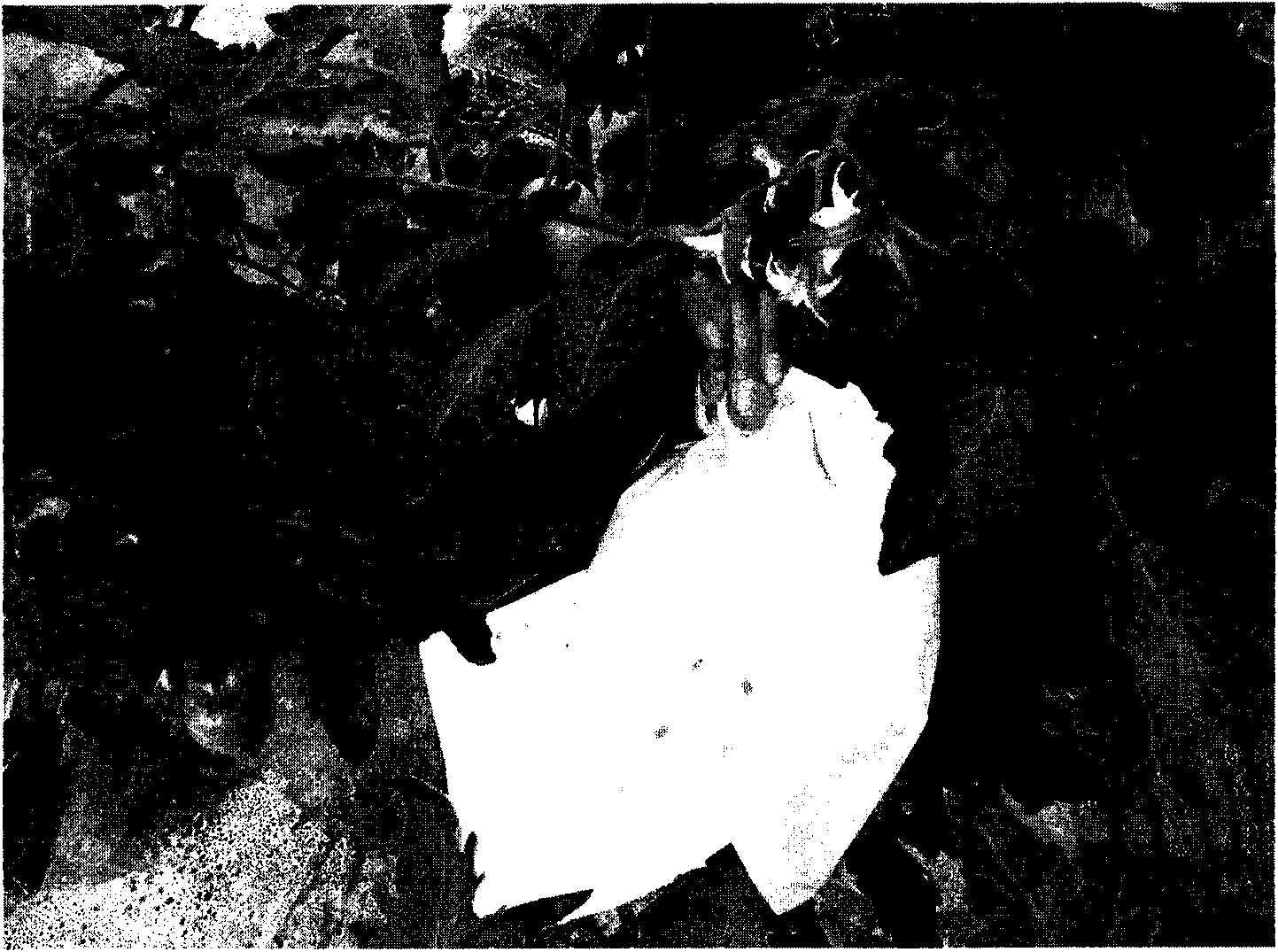Fruit bagging technique for increasing the security quality and marketing quality of tomatoes
A technology for commodity quality and tomato, applied in the fields of application, botanical equipment and methods, horticulture, etc., can solve the problems of Botrytis cinerea infection, unfavorable production and application, high temperature and humidity, achieve prevention and control of rotten fruit diseases, and is not easy to paste Fruit surface, good light transmittance
- Summary
- Abstract
- Description
- Claims
- Application Information
AI Technical Summary
Problems solved by technology
Method used
Image
Examples
Embodiment Construction
[0022] Instructions:
[0023] 1. When the tomato blooms, after dipping the flowers according to the conventional method, remove all the wilted petals in time when the petals wilt, and no petal residues should be left.
[0024] 2. When the tomato fruit grows to a diameter of about 2 to 3 cm (the size of an egg yolk), the whole ear is bagged, and each ear usually has 3 to 4 fruits.
[0025] 3. After bagging, use staples or paper clips or pins to seal the bag mouth to prevent pesticides and water droplets from dripping.
[0026] Precautions for use:
[0027] 1. Before bagging, use a chopstick or wooden stick to open the 4 pairs of vents on both sides of the bottom of the bag for smooth ventilation.
[0028] 2. After bagging, keep the air vent on one side facing up and the vent on the other side facing down so that the water droplets in the fruit bag can flow out.
[0029] 3. There is no need to remove the bag, the fruit in the bag will turn red naturally. Therefore, large-fru...
PUM
 Login to View More
Login to View More Abstract
Description
Claims
Application Information
 Login to View More
Login to View More - R&D
- Intellectual Property
- Life Sciences
- Materials
- Tech Scout
- Unparalleled Data Quality
- Higher Quality Content
- 60% Fewer Hallucinations
Browse by: Latest US Patents, China's latest patents, Technical Efficacy Thesaurus, Application Domain, Technology Topic, Popular Technical Reports.
© 2025 PatSnap. All rights reserved.Legal|Privacy policy|Modern Slavery Act Transparency Statement|Sitemap|About US| Contact US: help@patsnap.com



